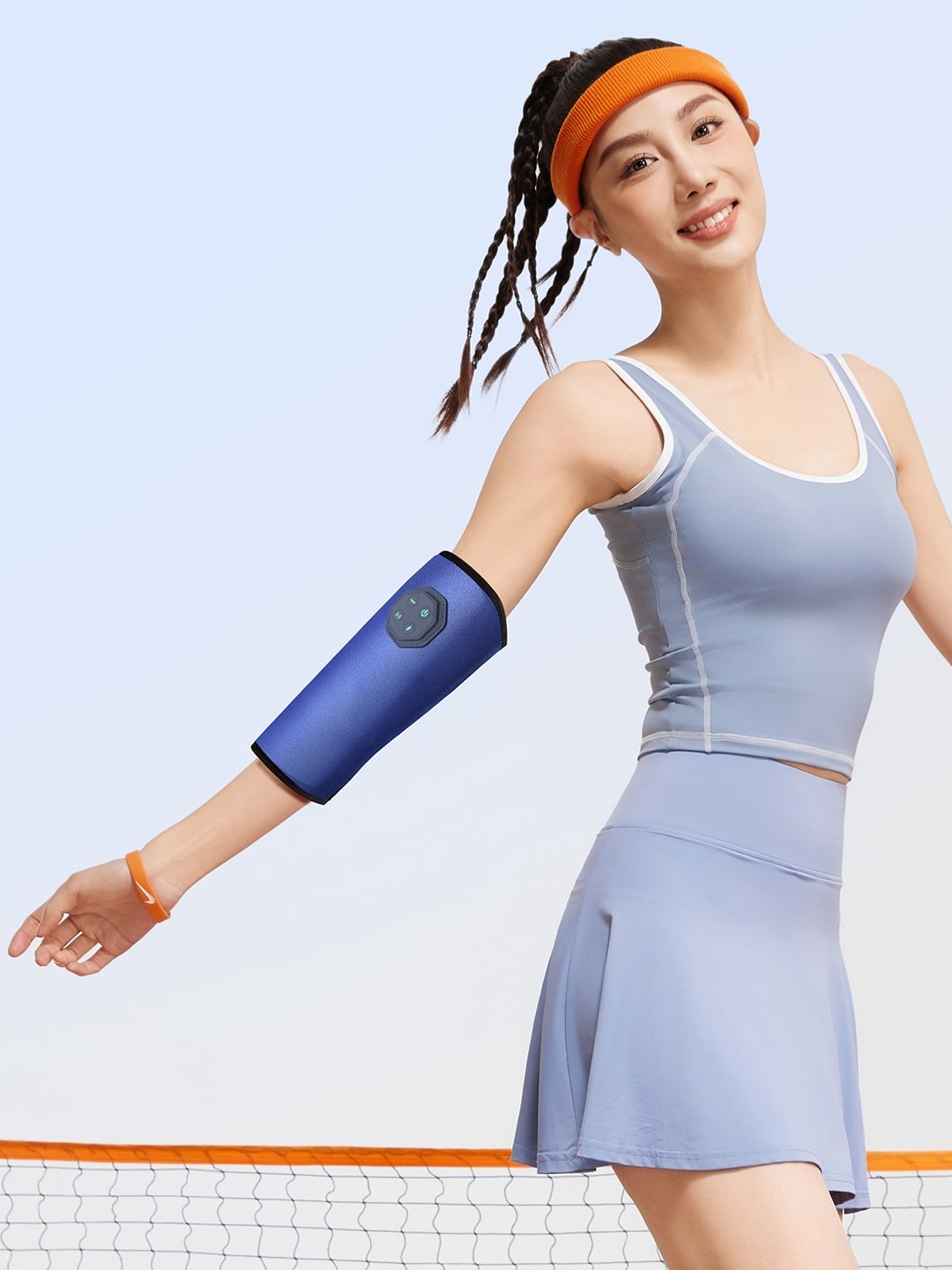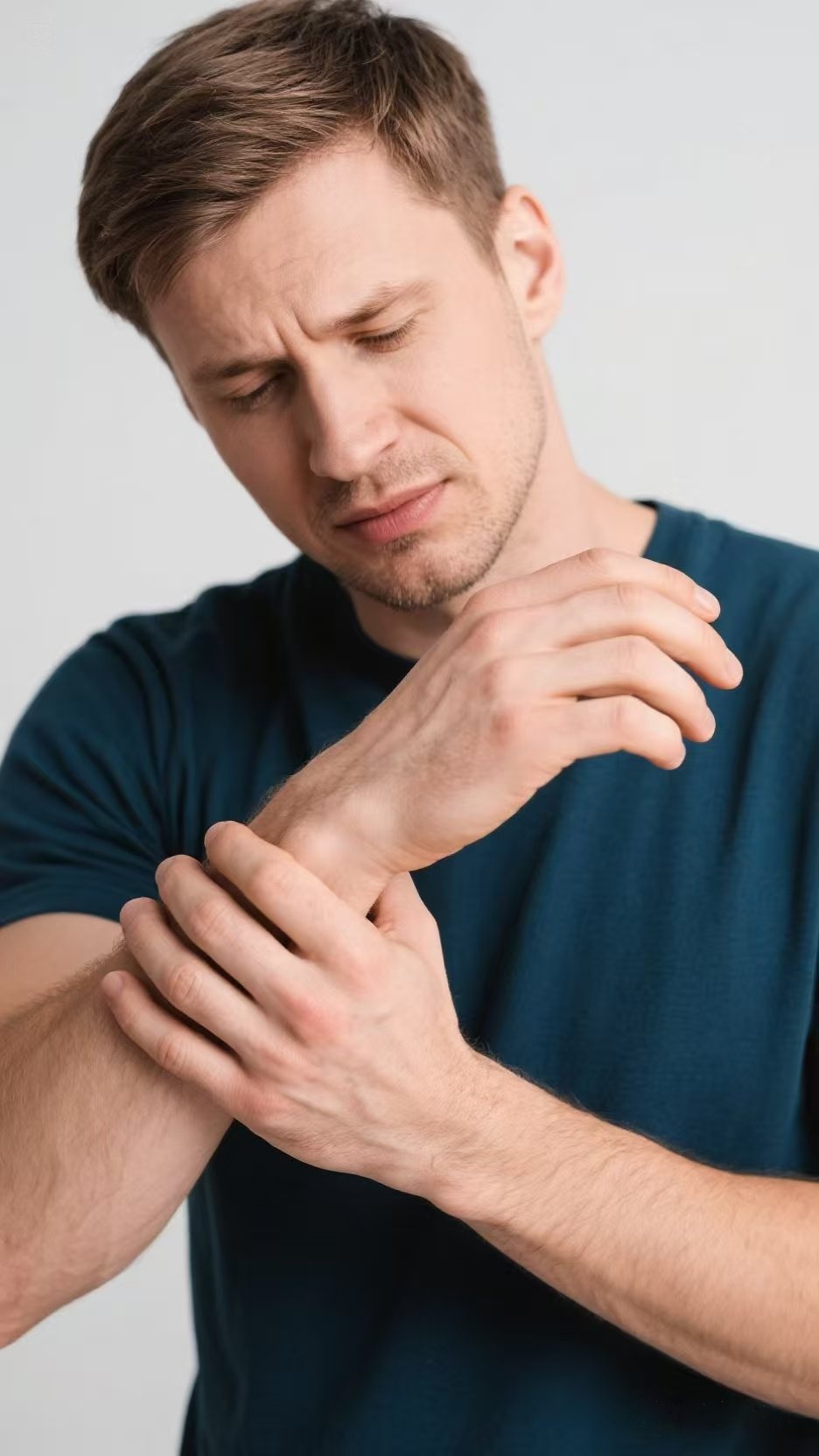Handheld Massagers for RA? A Canadian User's Guide
- By Grace
- Updated on
It's a question I hear quite often, especially from those of us feeling the bite of Canadian winters. You wake up, and your hands just don't want to cooperate. The stiffness and ache of Rheumatoid Arthritis (RA) can make simple things, like holding a coffee mug, feel like a monumental task. Naturally, you start looking for anything that might bring a bit of relief, and you’ve likely seen those electric handheld massagers pop up online. But do they actually work, or could they do more harm than good?
The truth is, it's not a simple yes or no answer. Across Canada, from online forums buzzing with patient stories to clinics in Ottawa, the conversation is active. Some people swear by them, while others are cautious. Let's walk through what’s really going on when you use one of these devices for RA, what the potential benefits are, and the crucial things you need to watch out for to use them safely.
Understanding Rheumatoid Arthritis in Your Hands
Before we can talk about solutions, we have to understand the problem. Rheumatoid Arthritis isn't just the wear-and-tear arthritis that comes with age. It's an autoimmune condition. This means your body's own immune system gets confused and starts attacking the healthy lining of your joints, called the synovium. This attack causes inflammation, which leads to the hallmark symptoms of RA: pain, swelling, warmth, and that deep, frustrating stiffness, especially in the morning or after periods of rest.
In the hands, this process can be particularly debilitating. The small, delicate joints of the fingers and wrists are common targets. Over time, this chronic inflammation can damage cartilage and bone, leading to joint deformity and a loss of function. The goal of any supportive therapy, including massage, is to manage these symptoms, reduce inflammation's impact, and improve your day-to-day quality of life. It’s about finding ways to calm the storm happening inside your joints.
How Hand Massagers Work: The Science of Relief
So, how does a machine that whirs and kneads your hand possibly help with a complex autoimmune disease? The magic isn't in curing the RA itself—nothing but prescribed medication can do that—but in managing the symptoms. Most quality handheld massagers use a combination of three key elements: compression, heat, and vibration.
Imagine your stiff hand sliding into a gentle, warm device. This is what we see helping people. The warm compress function helps increase blood flow to the area. Better circulation brings more oxygen and nutrients to the tissues and can help flush out inflammatory by-products. This is why a warm shower often feels so good on stiff joints. The compression therapy acts like a gentle, rhythmic squeeze. This can help reduce swelling and provides a sensory input that can override pain signals being sent to the brain. It's a bit like when you rub your elbow after bumping it—the new sensation helps distract from the ache.
Vibration or direct massage nodes work on the muscles and soft tissues around the joints. When joints are painful, the surrounding muscles tense up to protect them, which only adds to the stiffness and discomfort. Gentle massage can help these muscles relax, easing that secondary layer of pain and improving flexibility. It's this combination of warmth and gentle pressure that patients in cities like Edmonton and Ottawa have often reported provides at least some mild, welcome relief from their daily stiffness.

The Potential Benefits of Using a Hand Massager for RA
When used correctly and cautiously, a hand massager can be a wonderful supportive tool for arthritis pain management. The act of actively caring for your hands can also provide a positive mental effect, helping you feel more in control of the condition. The primary benefits you may experience include reduced morning stiffness, temporary pain relief, and improved circulation which helps reduce swelling and fluid pooling. By relaxing tight muscles and reducing stiffness, you might also find a slight increase in hand flexibility and range of motion. Additionally, the soothing effect of a gentle, warm massage can be incredibly relaxing, helping to reduce overall stress levels which can also help manage pain perception.

Navigating the Risks and Concerns
This is the part that's really, really important. As much as these devices can help, they can also hurt if used improperly. The concern I see most often in online RA communities across Canada is valid: can too much pressure or using it at the wrong time make things worse? The answer is yes. Your joints are inflamed and sensitive; they are not something to be aggressively treated.
The number one rule is this: never use a massager during an acute flare-up. If your joints are visibly swollen, red, and hot to the touch, they are in a highly inflammatory state. Applying direct pressure and heat at this time can exacerbate the inflammation. Think of it like trying to massage a fresh sprain—it's counterintuitive and harmful. It's also important to remember that some hand pain can be related to other issues like carpal tunnel syndrome. While some therapies overlap, what helps one might not help the other. Many people with RA also use a wrist brace for carpal tunnel, and a massager should be seen as a complementary tool, not a replacement for a supportive carpal tunnel wrist brace. The best approach is to manage each condition with the right tools. If you use wrist braces for carpal tunnel, talk to your therapist about how and when to use a massager alongside them.
Best Practices for Safe Use:
- Start Low and Slow: Always begin with the lowest intensity and heat setting. You can gradually increase it if it feels good, but more is not always better.
- Listen to Your Body: If you feel any sharp pain, stop immediately. The goal is gentle relief, not a deep-tissue workout.
- Limit Your Sessions: Keep sessions to about 10-15 minutes at a time. Overuse can lead to bruising or increased joint irritation.
- Avoid Acute Flares: As mentioned, save the massager for days of general stiffness and aching, not for periods of intense, active inflammation.
- Consult Your Doctor: Before starting any new therapy, including using handheld massagers, have a chat with your rheumatologist or a physical therapist. They know your specific condition and can give you the safest advice.
Choosing a Suitable Device in Canada
If you've weighed the pros and cons and decided to try one, the next question is what to look for. Not all handheld massagers are created equal. As one therapist noted, a device like the KLCOSY hand and arm massager has gained some preference because it ticks a lot of the safety boxes. Its popularity in major Canadian retailers also makes it an accessible option to examine in person.
But the brand isn't as important as the features. Here’s what you should look for in any massager for RA:
- Adjustable Intensity: This is non-negotiable. You must be in control of the pressure level.
- Optional Heat Function: The ability to turn the heat on or off is crucial. On some days, heat will feel great; on others, you may not want it.
- Multiple Massage Modes: Look for devices that offer different patterns (e.g., gentle pulsing vs. steady compression) so you can find what feels best for your hands on any given day.
- Ease of Operation: The buttons should be easy to press, and the device shouldn't be a struggle to get your hand into, especially when you're already in pain.
Whether you find it online or at a local store, prioritize these features. They are what make a massager a potentially helpful tool rather than a risky gadget. Remember, this device is meant to work for you and your specific needs, which can change from day to day with a condition like RA.
The Bottom Line
So, do handheld massagers help with rheumatoid arthritis? Yes, they can be a beneficial part of your symptom management plan, providing relief from stiffness and aches through gentle heat and compression. However, they are not a one-size-fits-all solution and come with important safety rules. By choosing a device with adjustable settings, listening closely to your body's signals, and avoiding use during severe flare-ups, you can safely explore whether this tool can bring you some much-needed comfort. Always think of it as one piece of a larger puzzle, working alongside your prescribed treatments and professional medical advice to help you live better with RA.
Frequently Asked Questions
Can a hand massager help with arthritis pain in hands?
Yes, a hand massager can help provide temporary relief from the pain and stiffness associated with arthritis, particularly rheumatoid arthritis. They typically use a combination of heat, compression, and vibration to increase blood flow, relax tense muscles, and soothe aching joints. However, it's a tool for symptom management, not a cure, and must be used with caution.
Are hand massagers safe for everyone?
No, they are not safe for everyone or for all situations. People should avoid using them during an acute RA flare-up (when joints are highly inflamed, red, and swollen). They should also be used with caution by individuals with severe osteoporosis, skin conditions, or certain vascular issues. It is absolutely essential to consult with a doctor or physical therapist before using one to ensure it's appropriate for your specific health condition.
What are the best hand massager brands in Canada?
While "best" is subjective and depends on individual needs, some brands are preferred for their safety and functionality. For instance, the KLCOSY hand and arm massager is often mentioned due to its adjustable intensity, multiple modes, and ease of use, and it is widely available in Canadian retail. When shopping, focus less on the brand name and more on features like adjustable heat and pressure settings, ease of operation, and positive reviews from other users with similar conditions.




